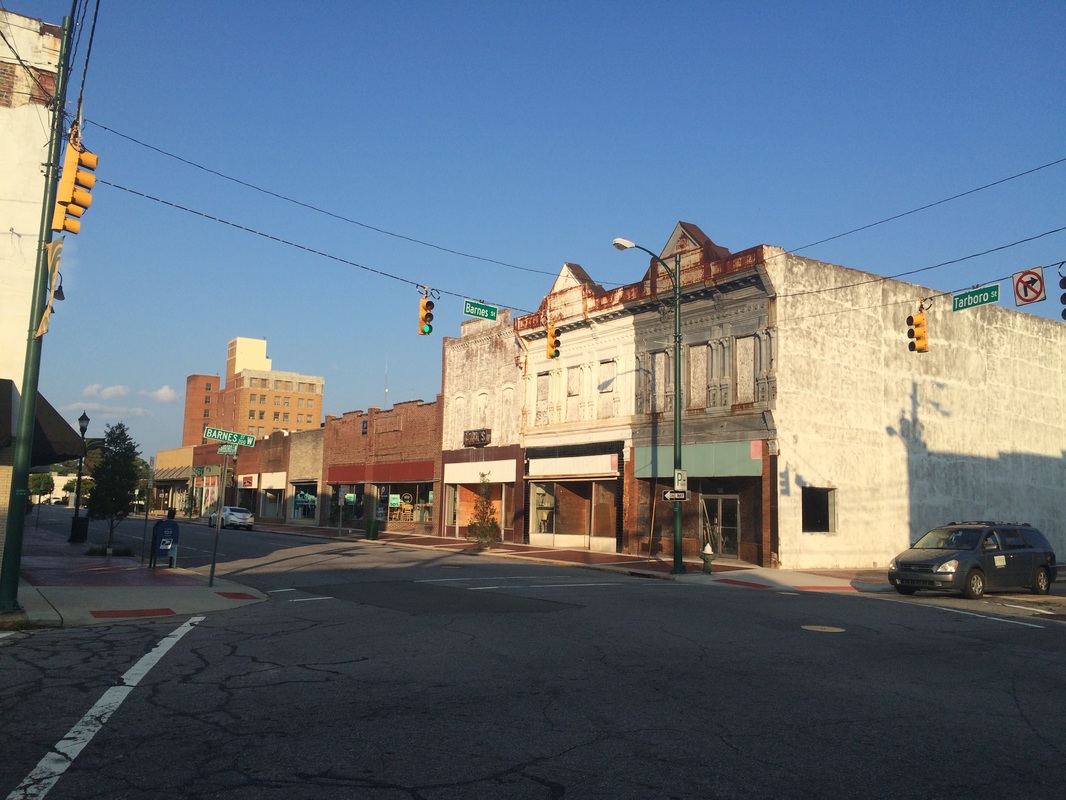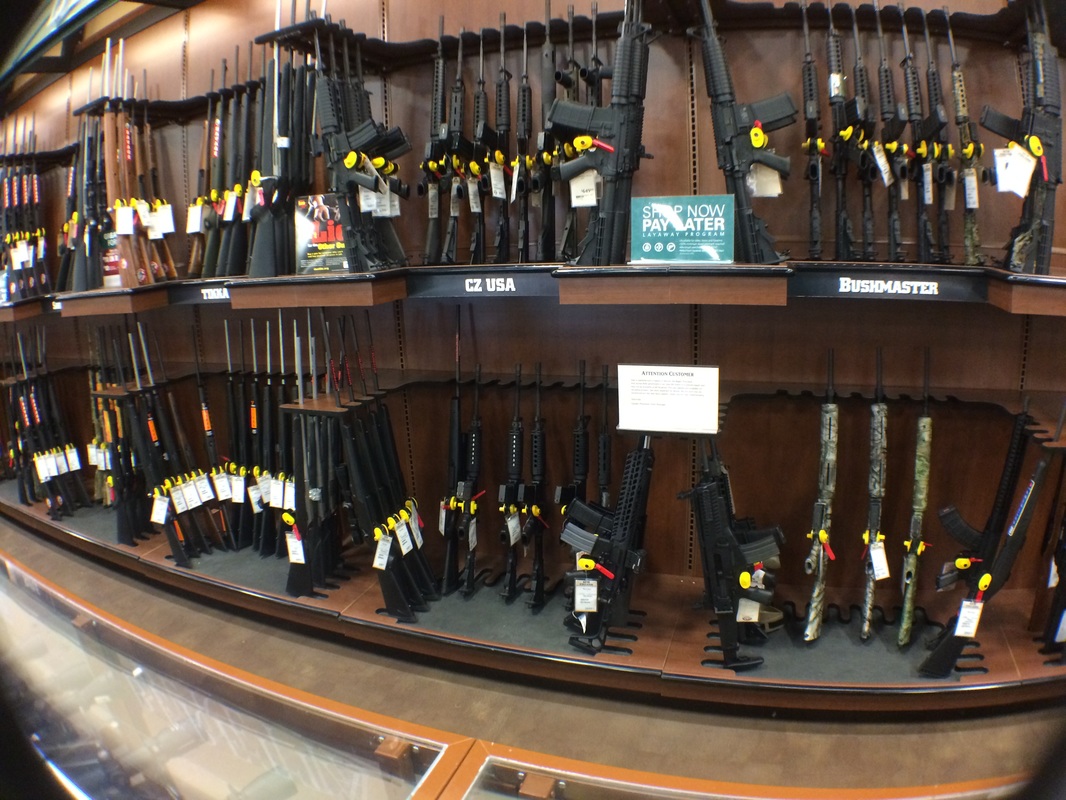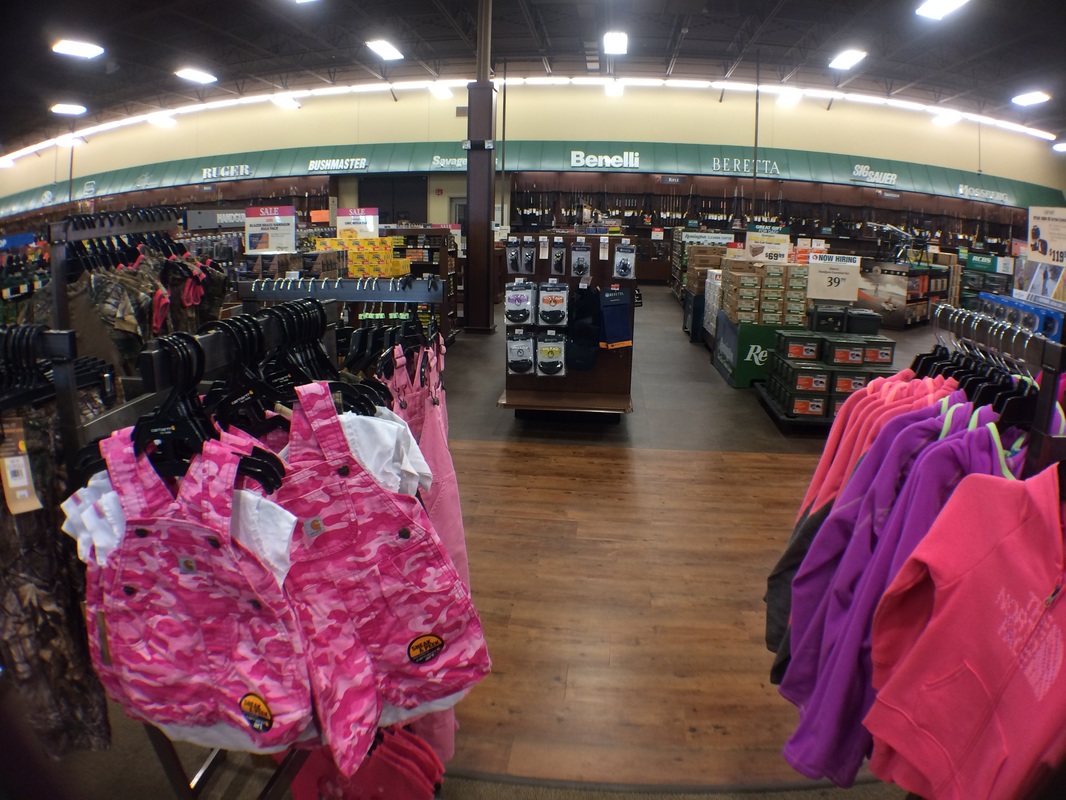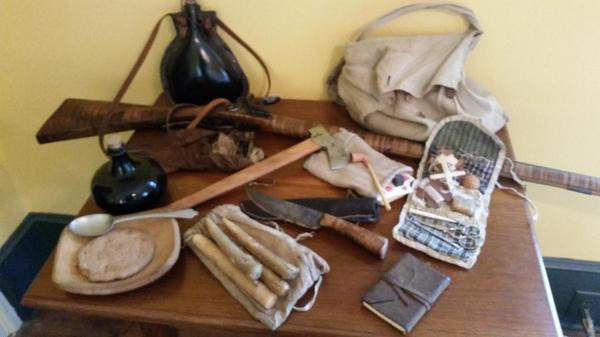First, just, my God -- that that sentence even makes sense. Assault weapons? You can not only just buy them but can buy them at so many stores that you have to decide which stores to boycott? But here we are.
So anyway. She's stopped patronizing the Cabela's and Gander Mountains and Bass Pro Shops of this world. And good for her, and I'm following along. It seems like the very least you can ask of the store where you buy your camping socks and stove fuel and tent waterproofing that they not make any of their money selling weapons of mass destruction to madpersons. So I'm following along and from now on staying away.
And I thought, being that the time is right and all, I would share an incident that happened last summer as I walked through Cary, NC, and stopped in a Gander Mountain myself -- I think to get a strap for my glasses, if I'm not mistaken.
Anyhow, I stopped there for a few minutes for whatever reason, and I remember three powerful impressions: Guns, pink, and fakey-fake country music about small towns.
It started I think with the cretinous modern country music pouring from the speakers, telling let's-pretend stories about the wonderful homespun small-town lives we good ol' rural real Americans are living. Remember, I had spent much of the previous year walking through those small towns -- empty, dusty, decrepit, collapsing small towns in rural South and North Carolina. Towns with no industries and no jobs and no young people and no future and no hope. I'm not talking about small-town values, whatever those are. I can say my own experience is you find plenty of kindness and plenty of hatred wherever you go.
I'm talking about small towns. And I wanted to scream at those speakers: You are lying. The small towns you pretend to love? Those towns do not exist, and if you spent even one hour every month outside Nashville or LA or wherever you write this crap, you'd know it. Worse, maybe you actually do know it -- you're just writing music that will sell.
Anyhow I saw it, and if you've driven five miles off the interstate, you've seen it too. Our small towns are dead. Family farms bought up by agribusiness, most manufacturing gone for cheaper labor and even less regulation, and it's not coming back. Cry about this, rail about it, do something about it -- but the worst thing you can do is romanticize it and pretend those towns still exist. They don't. I've walked through them by the dozen. They're gray, dead relics of what once were little towns, and even the locals drive to the bypass to get cheap bacon biscuits. That is just over, and pretending it's not is childish and dangerous.
And what killed small towns? Unregulated corporate capitalism, combined with a terrible lack of education? All the guns in those stores cannot protect you from it.
And yeah, the guns. The place has two full walls of guns, including used guns. And yeah, there are guns that you're about as likely to use for hunting as a can opener. I don't mean people-hunting, like in Orlando or any of the depressingly long litany of other place names we can all now recite. I mean the kind of hunting where you patiently wait for a deer or a turkey and shoot it and field dress it and eat it or give the food to your friends. That's great stuff, that hunting. But you don't do it with assault rifles.
Those rifles are the Saturday-night Specials of a new century. Built only for destruction, they offer nothing but danger. I'm sorry we're such a mess as to continue to allow you to buy those as a culture, but do me a favor: don't pretend you're buying one for hunting. You're buying it for one of three reasons: 1. You just like to shoot stuff up and make a lot of noise. My opinion? You can do that without an assault rifle. 2. You plan to kill a bunch of people. In which case, welcome to the country of your dreams. Or 3. Your thinking is so disorganized and you understand so little of statistics or public health that you genuinely believe that you will use that gun to protect yourself in your home, despite the fact that all the statistics say it's much more likely you'll use it on your wife, or your toddler will accidentally use it on you or one of the neighbor's toddlers.
No matter where you go on that assault rifle, you're telling yourself a lie no less preposterous than the ones in those country music songs. I'm thinking it's about time we quit with that lying.
As for the pink, I seem to remember something about girls' guns, though when I went back today to check though I saw plenty of pink, the only thing that really caught my eye was a section of little pink camouflage overalls for toddlers. Which I don't think would camouflage you successfully outside of Barbie's Dream House, And mind you as far as I'm concerned any toddler can wear anything he or she desires, so I'm not against pink camouflage overalls in principle. But I do think there's some kind of fantasy of a girly-pink gun girl going on in this, and all I'm really saying as that, combined with the other lies, this pink stuff gave me the willies.
So, here we are. Another madman goes on a rampage with an assault rifle and we're wringing our hands about guns again, and once again nothing will change. I spoke a bit about Lawson and the guns of his time here (in response to the Oregon community college shooting) (and here's a link to all of 2015's mass shootings), and I remember that when I walked through Cary and into that Gander Mountain I wanted to rage about the lies we tell ourselves about guns and small towns but feared I was just being churlish.
Well, I am being churlish, for sure. But I'm also right.
Still, this post will make no difference. Nobody who still defends the rights of citizens, with almost no regulation, including those on watch lists, to get their hands on these weapons of mass destruction is paying a lick of attention to facts, or science, or statistics -- or to the tears of the bereaved left behind by whichever mass shooting is nearest to your memory when you read this. I write it only to raise my voice. I don't know what else to do.




 RSS Feed
RSS Feed